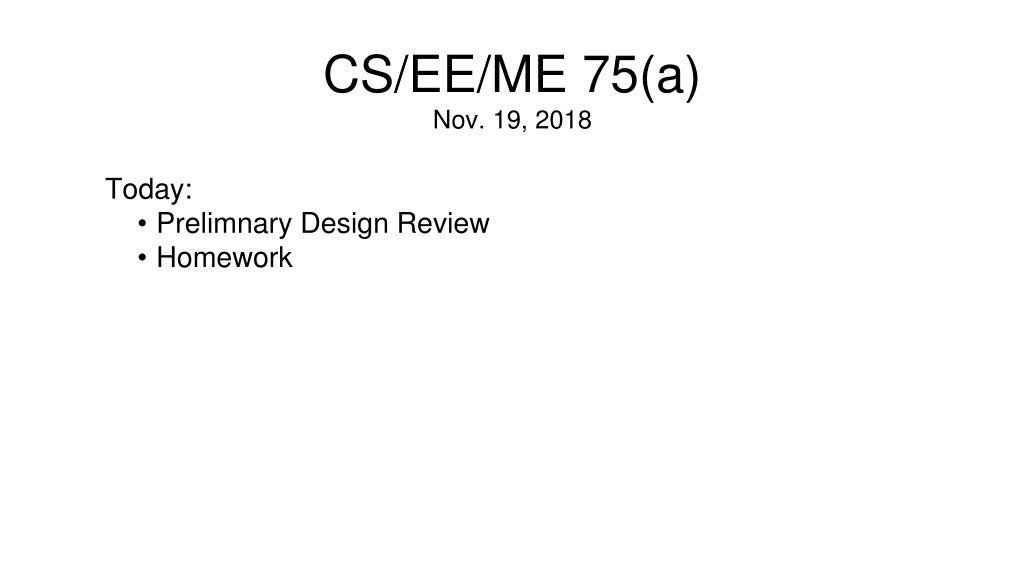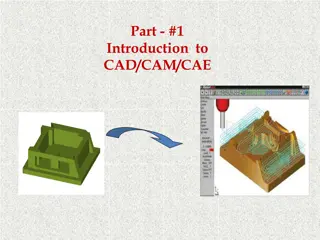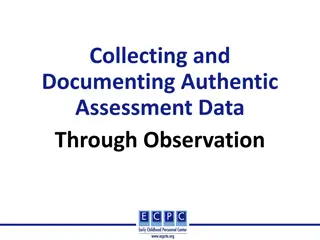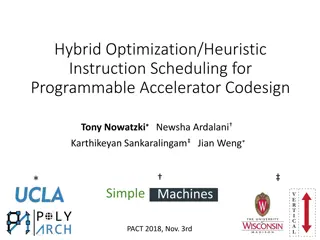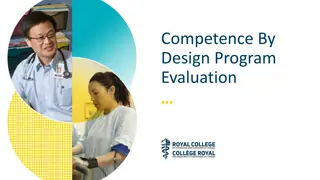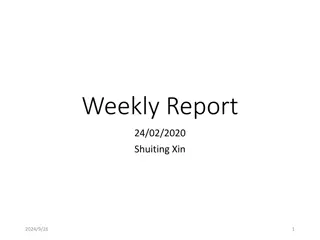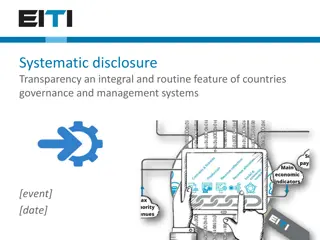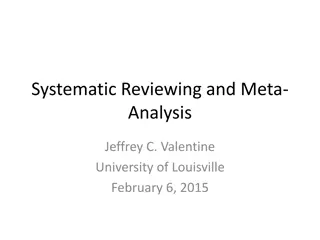Systematic Design Evaluation and Optimization Methods
This content covers various structured design methods such as the V Model of Systems Engineering, Pugh Analysis, Weighted Objectives Method, and Ranking and Weighting Objectives. It also discusses the process of recognition, generation, evaluation, and optimization of design alternatives, along with the use of weighted objective trees and matrices to systematically evaluate and compare concepts. The content emphasizes the importance of defining design objectives, ranking and weighting them, and selecting the best alternatives for further analysis and comparison.
Uploaded on Oct 06, 2024 | 0 Views
Download Presentation

Please find below an Image/Link to download the presentation.
The content on the website is provided AS IS for your information and personal use only. It may not be sold, licensed, or shared on other websites without obtaining consent from the author. Download presentation by click this link. If you encounter any issues during the download, it is possible that the publisher has removed the file from their server.
E N D
Presentation Transcript
CS/EE/ME 75(a) Nov. 19, 2018 Today: Prelimnary Design Review Homework
Structured Design Method(s) Recognition of a Need Clarification of Objectives Establish Function Set Requirements Problem Definition Generate Alternatives Evaluate Alternatives Create Details Solution Generation Preliminary Design Review! Analysis & Optimization Prototyping
Weighted Objectives Method provides a way to systematically evaluate and compare concepts Procedure List the design objectives Rank-order the list of objectives Assign relative weightings to the objectives Evaluate and compare the relative utility values of the alternative designs
Ranking and Weighting Objectives This part of the process is highly subjective Ranking can be done using a pair-wise comparison This becomes more cumbersome with more objectives Weighting can be done based on the ranking This is even more subjective A simple way to perform these steps is to examine the objective tree and weight each level and sub-level. The ranking and weighting will drop out of this examination
Weighting Matrix Level 1 Level 2 Level 3 Total Attribute Hold Can Crush Can Release Can Fast Portable Low force East to Clean Limit Access Hands Free Cheap 0.3 0.3 0.3 0.7 0.7 0.7 0.7 0.7 0.7 0.7 0.1 0.8 0.1 0.4 0.4 0.4 0.4 0.3 0.3 0.3 1 1 1 0.03 0.24 0.03 0.056 0.028 0.14 0.056 0.189 0.021 0.21 0.2 0.1 0.5 0.2 0.9 0.1 1
Putting it all together 1. 2. 3. 4. Choose the criteria for comparison (leaves of the objective tree) Develop relative importance weighting (based on objective tree) Select the alternatives to be compared (from pruning the initial concepts) Evaluate alternatives (relative comparison +, ,0) Pick one to be the datum or baseline concept, and compare all designs to that one 5. Compute the satisfaction
Common Design Review Procedures System Requirements Review (SRR). review system requirements to ensure the documented requirements reflect current knowledge of needs identify requirements that may not be consistent with development constraints, put the requirements document under version control to serve as a stable baseline for continued development. Preliminary Design Review (PDR). Reviews the conceptual design to ensure that the planned technical approach has a good chance of meeting requirements. Identify issues which need further consideration and analysis Identify Risks
Common Design Review Procedures Critical Design Review (CDR). Review the detailed design to ensure that the proposed implementation has met the system requirements. Test Readiness Review (TRR). Review preparations and readiness for testing of mechanical, electrical, and software configuration items, including adequate version identification of software and test procedures. Production Readiness Review (PRR). Ensure that the design is completely and accurately documented and ready for formal release to manufacturing.
Preliminary Design Review A review conducted to evaluate the progress, technical adequacy, and risk resolution of the selected design approach for one or more configuration items; to determine each subcomponent design's compatibility with the requirements; to evaluate the degree of definition and assess the technical risk associated with the selected manufacturing methods and processes; to establish the existence and compatibility of the physical and functional interfaces among the configuration items and other items of equipment, facilities, software and personnel; and, as applicable, to evaluate the preliminary operational and support documents. (ISO/IEC/IEEE 24765 2009)
General PDR Success Criteria The proposed design appears to meet the objectives, requirements, and performance goals. There are adequate margins at this stage of the design. I.e., the design is robust The design can meet interface requirements and constraints. I.e., it can fit into the system. Problem areas, open areas, and known risks are identified. There are concrete plans to resolve open issues, consistent with available resources. Integration and test plans are adequate. The project has defined plans and processes in place for managing and controlling the development and operation of the mission deployment. 14
Homework Start organizing your team for your PDR.
